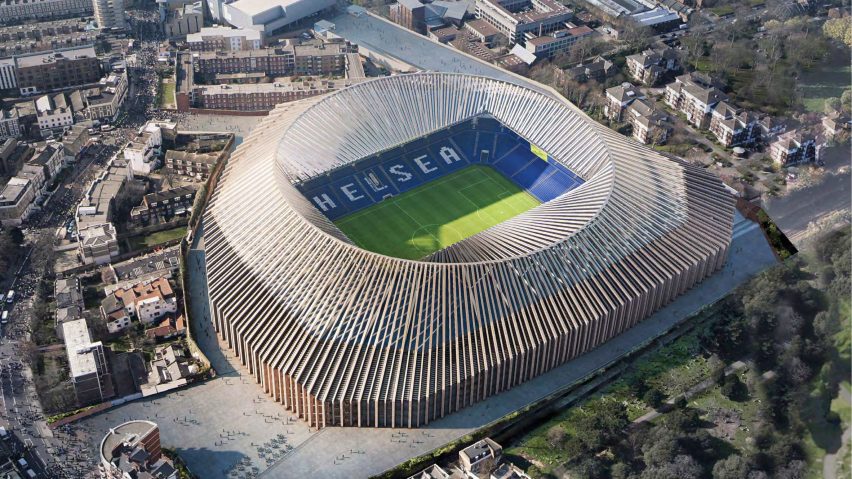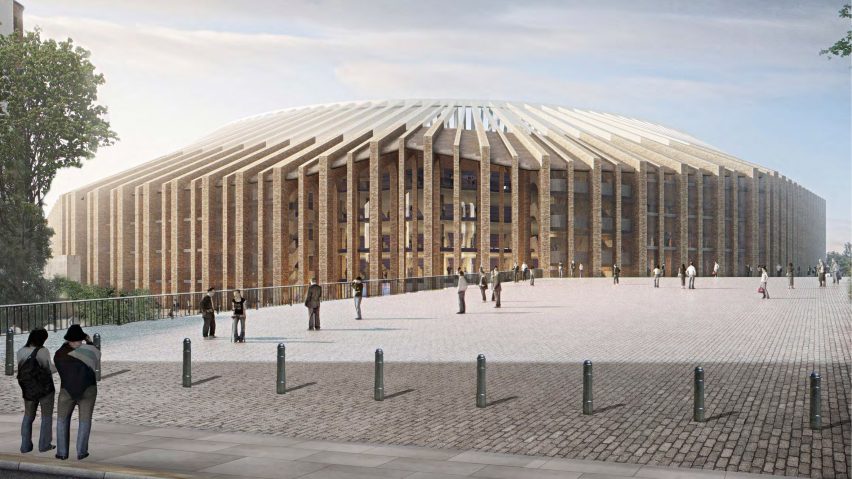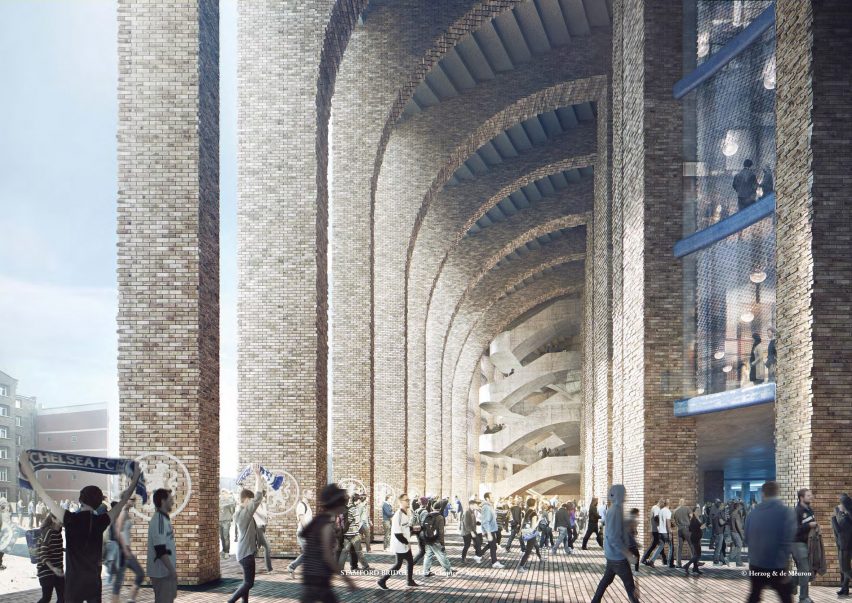
Council saves Herzog & de Meuron's Chelsea football stadium from neighbours' injunction
An injunction that would have prevented Herzog & de Meuron from redeveloping Chelsea FC's football stadium has been blocked by the local council, paving the way for construction to begin.
Planning permission was granted for the £500 million overhaul of the west London football club's 41,837-seat Stamford Bridge stadium in January 2017.
But a group of residents has been protesting the design, which Swiss firm Herzog & de Meuron is working on with London practice Lifschutz Davidson Sandilands. They claim the building will block light to their neighbouring properties.

Two households in Stamford Cottages brought a High Court injunction against the development, demanding that the proposal – set to increase the stadium's spectator capacity by almost 18,400 seats, up to 60,000 – be adjusted.
The football club asked Hammersmith and Fulham Council to intervene, fearing the injunction could prevent the significant private investment needed to finance the development.
The council made the decision to compulsorily acquire air rights above Stamford Bridge, with the view to leasing the land back to the club. This means the claimants will no longer be able to prevent the project from proceeding through injunction, and instead receive compensation.
"Given the significant level of investment necessary, the club state that they will not be able to implement the development or secure any necessary development financing whilst there remains a risk that the existing injunctive proceedings might succeed," reads the document prepared by head of planning regeneration, John Finlayson.

Finlayson's document states a "compelling" public interest in the council acquiring the land, as the the redevelopment of the club would bring "significant benefits" to the local area and London.
Stamford Bridge was originally built in 1876 to designs by Scottish architect Archibald Leitch and used as an athletics club before becoming Chelsea's home ground in 1905.
The redesign will see 264 brick piers encase the existing stadium to create space for extra spectators, matching the stadium capacity of rival London club Arsenal.